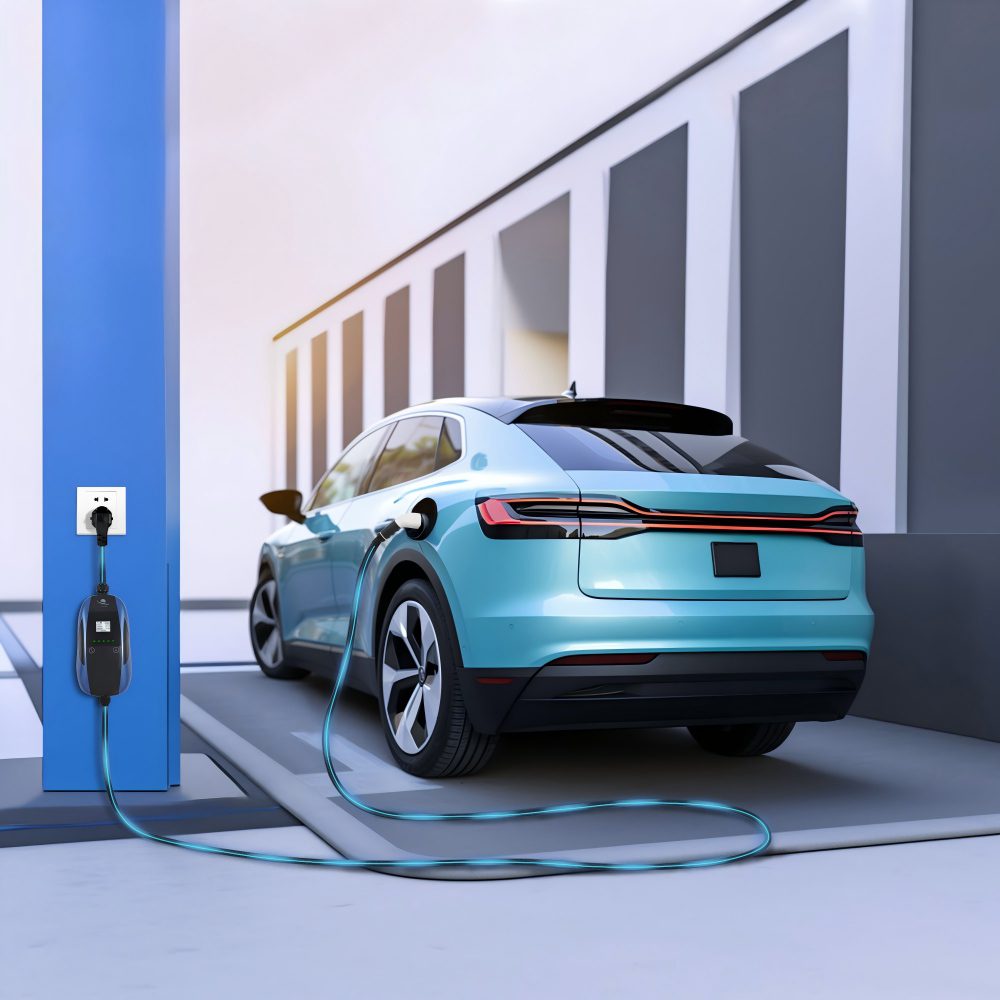
NEWS CENTER
Charging speed, charging station types, and usage scenarios are all factors car owners must carefully consider when choosing a charging method. This article provides a detailed guide to selecting between fast-charging and slow-charging stations, helping you maximize efficiency during charging.
1. Understanding Charging Types
Before delving into charging stations, it’s essential to grasp the fundamental charging types. New energy vehicles primarily use two charging methods: fast charging (DC fast charging) and slow charging (AC slow charging).
1.1 Fast Charging (DC Fast Charging)
Fast charging stations typically utilize direct current (DC) to charge electric vehicles at exceptionally high speeds. For mainstream models currently available, fast charging stations generally operate at power levels between 60kW and 150kW, with some high-efficiency stations reaching up to 350kW. This efficiency means a vehicle can charge to approximately 80% capacity within just 30 minutes, greatly facilitating charging needs during long-distance travel.
 1.2 Slow Charging (AC Slow Charging)
1.2 Slow Charging (AC Slow Charging)
Slow charging stations utilize alternating current (AC), with charging power typically ranging from 3.7 kW to 22 kW. Slow charging takes considerably longer, generally requiring over 6 hours for a full charge. However, its advantage lies in lower equipment installation costs, making it suitable for widespread deployment in residential settings and urban public parking facilities.

2. Factors Influencing Charging Station Selection
Selecting the appropriate charging station type depends not only on the station itself but also on multiple factors.
2.1 Vehicle Type
Different types of new energy vehicles have distinct requirements for charging stations. Some electric vehicle models support fast charging, with batteries capable of handling high-power inputs, while others may only support slow charging. Additionally, factors like battery capacity, chemical composition, and temperature also affect charging efficiency. Therefore, understanding your vehicle’s charging characteristics is essential before selecting a charging station.

2.2 Charging Scenarios
Charging scenarios refer to the environments where users operate their electric vehicles. For instance, urban commuters may find home or workplace slow-charging stations sufficient for daily needs. Conversely, long-distance travelers require fast-charging stations as essential, since rapid recharging en route enhances driving efficiency and reduces travel time. Thus, charging station selection must holistically consider both daily driving patterns and travel habits.

2.3 Charging Costs
Charging costs also differ between fast and slow charging. Typically, fast charging rates are higher than slow charging rates. Therefore, owners who frequently use fast charging should monitor their charging expenses. Additionally, electricity pricing policies vary by region. Owners should proactively research local electricity rates and incentive programs when selecting a charging station to avoid unnecessary costs.
2.4 Charging Infrastructure
The availability of charging infrastructure in a given area is another critical factor in selecting a charging station. In cities with extensive charging network coverage, users can easily locate fast-charging stations for quick refueling. Conversely, in more remote regions or areas where new energy vehicles are just beginning to gain traction, slow-charging stations may be more prevalent, influencing owners’ practical choices.
3. Charging Station User Experience
After selecting a suitable charging station, users may encounter varying experiences during actual use.
3.1 Fast Charging Experience
Fast charging stations typically feature multiple charging ports, enabling simultaneous service for several vehicles. High demand for fast-charging stations exists in high-traffic areas like highway service areas and commercial complex parking lots. Drivers using fast charging should pay attention to the actual power output and charging efficiency of the station, as performance varies significantly between brands and models. Additionally, the waiting time for a full charge may require extended use of the station, potentially affecting other vehicles’ charging schedules.
3.2 Slow Charging Experience
Installing slow-charging stations at home or work offers a relatively stable user experience. Owners can charge overnight, ensuring a fully charged battery by morning without the hassle of queuing or waiting. Slow chargers also feature lower capacity and longer charging times, operating quietly and causing minimal disruption in residential settings. However, due to their lower power output, slow chargers cannot meet the rapid energy replenishment needs for long-distance travel. Therefore, combining both fast and slow charging options provides a more advantageous solution.
4. Future Development Trends
With technological advancements, the charging station industry continues to evolve. Several future trends warrant attention.
4.1 Widespread Adoption of High-Power Fast Charging
Through the ongoing efforts of electric vehicle manufacturers and charging station providers, high-power fast-charging equipment will increasingly appear in urban and highway charging networks. This will further enhance EV charging efficiency, reduce user wait times, and make new energy vehicles more convenient to use.
4.2 Introduction of Smart Charging Systems
Smart charging systems leveraging big data and IoT technologies are gaining traction. Users can connect to charging stations in real-time via mobile apps, pre-book charging slots, intelligently plan optimal charging schedules, and even monitor charging processes with precision. This significantly enhances the user experience while providing enhanced management capabilities for power grids.
4.3 Integration of Green Energy
With the rise of renewable energy, an increasing number of charging stations will be connected to green power sources such as solar and wind energy. This approach not only reduces charging costs but also achieves zero-emission environmental goals, providing vehicle owners with a truly green mode of transportation.



































.png) PV-Storage-Charging
PV-Storage-Charging-1.png) High & Low Voltage Switchgear
High & Low Voltage Switchgear Company Profile
Company Profile News Information
News Information Service Support
Service Support Cloud Platform Customized Development
Cloud Platform Customized Development Leisheng Charging International Platform
Leisheng Charging International Platform Leisn Home Charging Platform
Leisn Home Charging Platform